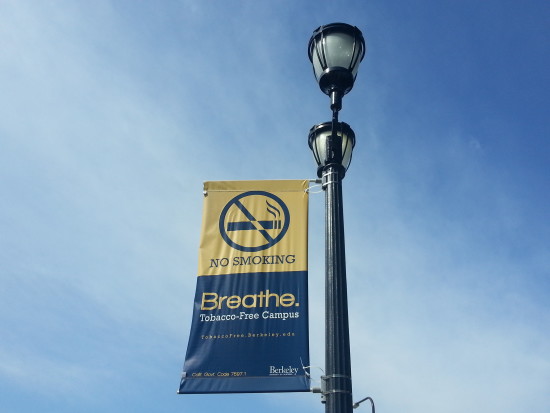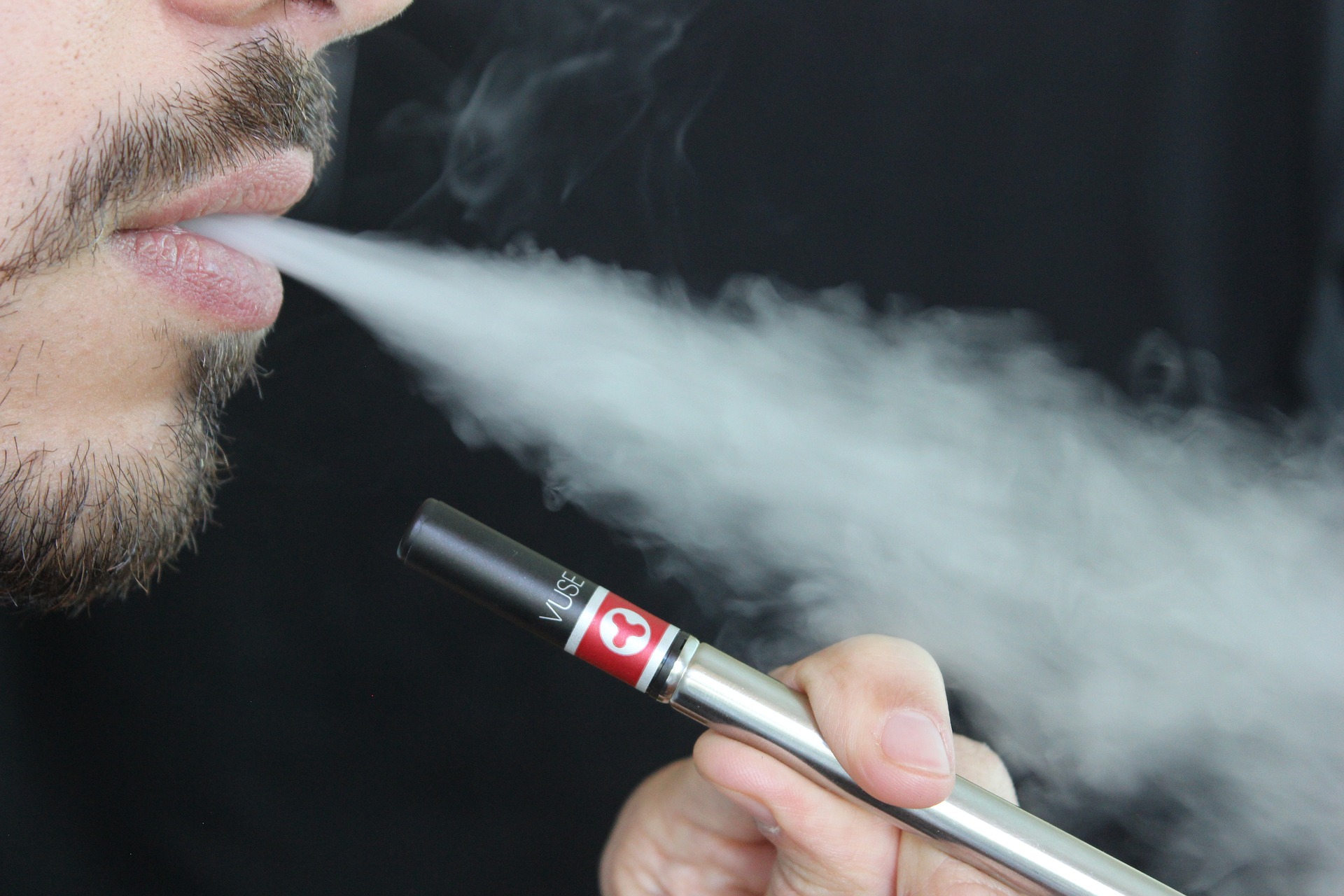E-cigarettes have gotten more and more popular in the past few years, especially as a “healthier” alternative to smoking tobacco. The safety of e-cigarettes is still debatable given the scarcity and spotty nature of studies surrounding the product. Even so, e-cigarettes threaten to undo the public health victories made against tobacco and secondhand smoke, especially if their production and sales continue to go unregulated.
After decades of campaigns and movements warning the public about the dangers of tobacco and secondhand smoke, it is no longer socially acceptable to smoke in public places, and smoking rates have decreased. E-cigarettes threaten this progress by normalizing tobacco intake and reintroducing the act of smoking into buildings and public spaces where traditional cigarettes are banned. E-cigarettes slip through many local smoke-free policies on technicalities.

No smoking campaign at UC Berkeley. Image Source: Nicole Barcega
The FDA does not regulate e-liquid manufacturing, so it is not surprising that a study in Utah found that the labeled nicotine content was often different from the actual nicotine content, ranging from 88% less to 840% more than stated.
In January, the California Department of Public Health released a report that declared e-cigarettes a community health threat. Addressing the fact that the use of e-cigarettes has surpassed the use of traditional cigarettes among teenagers, the CADPH reported that advertising techniques that were banned for tobacco products have been used to market e-cigarettes and that these advertisements typically do not include information about nicotine content.
Contrary to popular belief, the e-cigarette aerosol is not just water vapor. E-cigarettes are considered electronic nicotine delivery systems (ENDS), which are battery powered devices that provide doses of nicotine by aerosol.
E-cigarettes have become a new and trendy introduction to nicotine. Nearly 15% of current e-cigarette users have never smoked conventional cigarettes, and one-third of teenagers who used e-cigarettes in the past 30 days have never tried a cigarette.
The CADPH report called for new policies to treat e-cigarettes like traditional cigarettes in order to protect the public from exposure to the liquid and aerosol. These methods and policies include prohibiting sale of e-cigarettes to minors, taxing them like tobacco products, and prohibiting the use of e-cigarettes in the same places where smoking has been banned.
There is also a call for retail licensing for e-cigarettes vendors, which would allow the public health community to track where products are being sold and to better enforce restrictions against youth access. The FDA has also proposed regulations to control e-cigarette marketing and ensure that product information released to the public is available and accurate.
E-cigarettes are re-normalizing smoking behavior and providing a new nicotine pathway for younger generations and populations previously uninterested in traditional cigarette use. Without action, e-cigarettes could undermine the progress made to prevent and reduce traditional tobacco use and secondhand smoke exposure.
Feature Image Source: E Cigarette by lindsayfox










